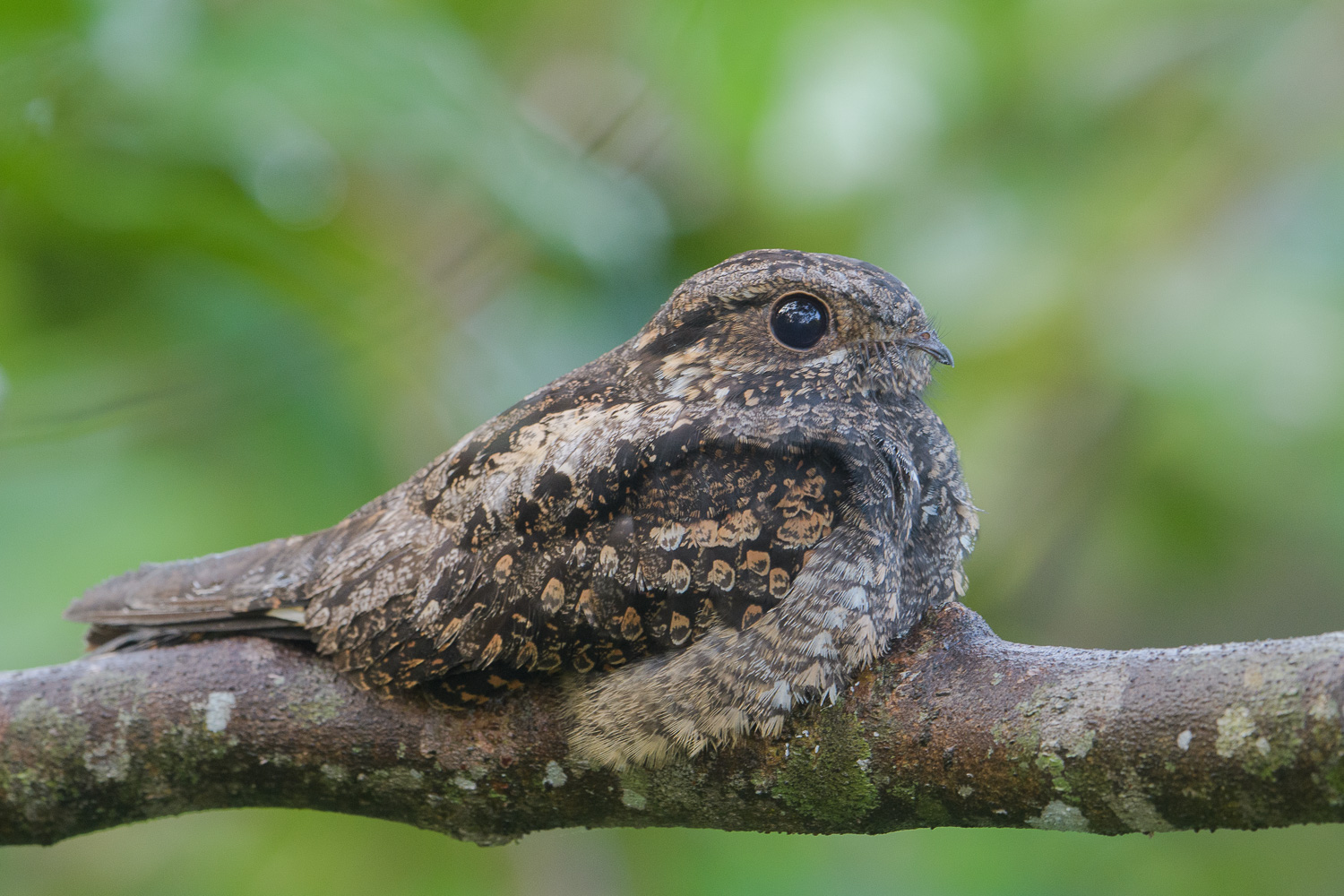Scientific Name: Caprimulgus jotaka
Malay Name: Tukang Kelabu Timur
Chinese Name: 普通夜鹰
Range: Breeding Range: Himalayas to East and South-east Asia.Nonbreeding Range: Indian subcontinent, mainland South-East Asia to Indonesia and Philippines.
Taxonomy: Polytypic. Subspecies are: jotaka, hazarae.
Size: 28-32 cm
Identification: Dark, greyish bird. Smaller and with a darker crown compared to Large-tailed.Male: No rufescent tinge on nape, heavier black vermiculation on upperparts. Smaller white throat patch. Darker breast, scapulars less contrasting, with black, buff and whitish bars overall; show less obvious whitish to buff bars across wing coverts. In flight, small white wing patches and tail patches.Female: Wing patches smaller than male and buff, and lack any obvious white tail patches.
Similar looking species: Large-tailed Nightjar, Savanna Nightjar
Habitat: On migration, found in primary forest, secondary growth, plantations and wooded parks.
Behaviour/Ecology: Usually seen perched on taller tree branches in daytime. Active nighttime.
Local Status: Uncommon migrant.
Conservation Status: Least Concern (BirdLife International 2016)
Featured reports: Mar 2022, Apr 2022, Oct 2022, Nov 2022, Dec 2022, Jan 2023, Feb 2023, Mar 2023, Oct 2023, Nov 2023, Jan 2024, Feb 2024, Mar 2024
Migrant bar chart (see more bar charts):
Conservation Status: IUCN Red List Page
Sound Recordings: xeno-canto Link
Wikipedia Entry: Wikipedia Link
eBird Species page: eBird (Gray Nightjar)
References:
BirdLife International. (2016). Caprimulgus jotaka. The IUCN Red List of Threatened Species 2016. https://dx.doi.org/10.2305/IUCN.UK.2016-3.RLTS.T22725702A94899999.en. Accessed on 1 January 2023
Robson, C. (2014). Field guide to the birds of South-East Asia (Second Edition). Bloomsbury Publishing, London.
RECOMMENDED CITATION
Bird Society of Singapore. (n.d.). Grey Nightjar. Retrieved on May 14, 2024 from https://singaporebirds.com/species/grey-nightjar.



